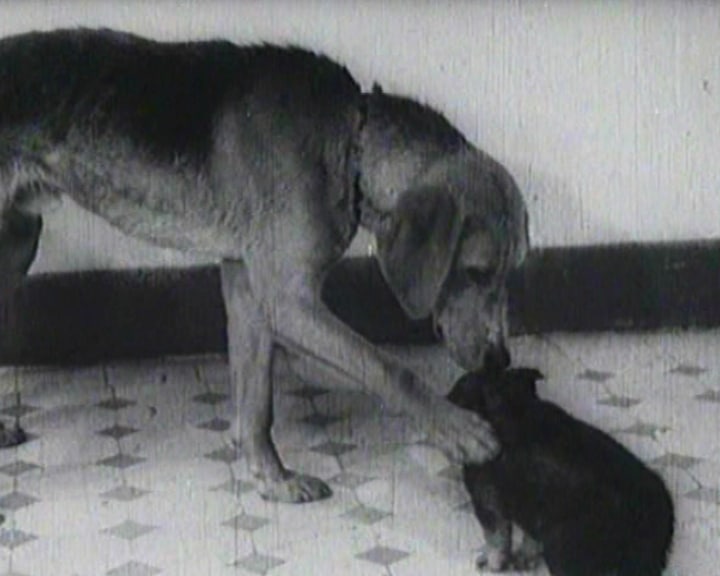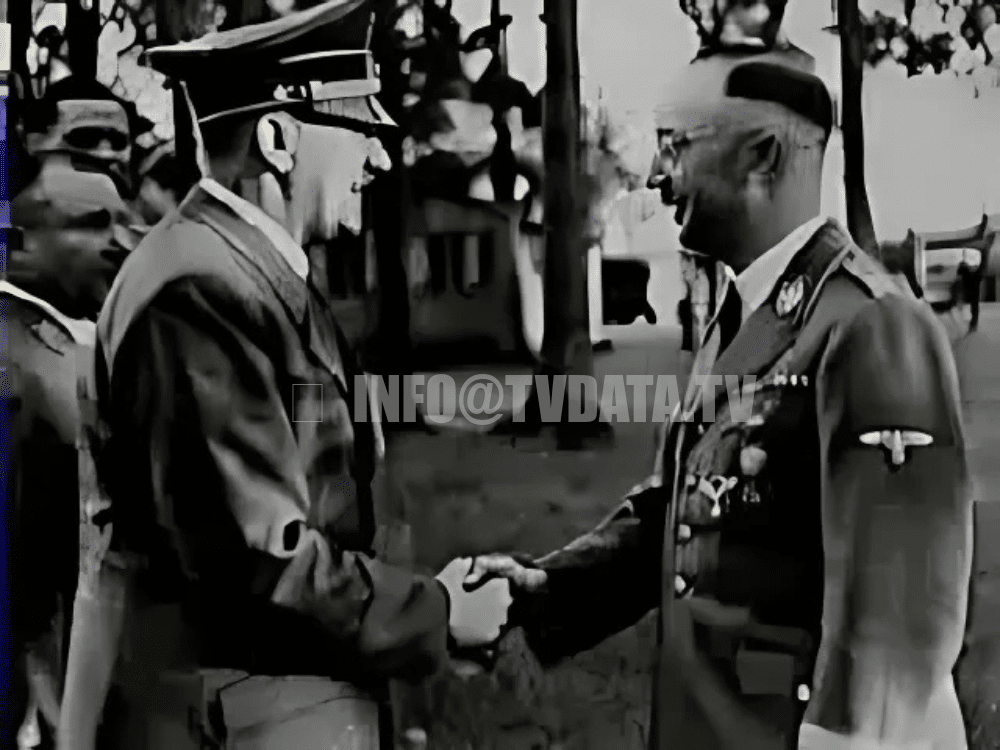On March 1, 1962, Soviet Air Force Colonel Pyotr Dolgov made history by jumping from an incredible altitude of 28,640 meters (93,976 feet) as part of the Soviet Union’s high-altitude parachute program. This daring feat of courage and endurance subjected Dolgov to extreme conditions, including freezing temperatures and blistering speeds during his freefall. This captivating story showcases the boundaries of human determination and the pursuit of science and exploration.
Preview a Video clip here
Scene 1: The Background and Preparation (Stock Footage: Soviet Union space race, parachute technology, and training sessions)
During the 1960s, the space race between the United States and the Soviet Union was in full swing. The Soviet Union was eager to make advancements in various aspects of space exploration, including high-altitude parachuting. In preparation for this ambitious jump, Dolgov and his team underwent rigorous training, including physical conditioning and mental preparation, to ensure his readiness for the challenging conditions he would face during his jump.
Scene 2: The Jump (Stock Footage: Stratospheric balloon, Dolgov in his suit, and the actual jump)
On the fateful day, Dolgov ascended to the stratosphere in a specially designed gondola attached to a high-altitude balloon. As he reached the designated altitude, he carefully prepared himself for the jump. Wearing a pressurized suit to protect him from the harsh conditions, he stepped out into the void and began his historic descent.
Scene 3: Extreme Conditions (Stock Footage: Freezing temperatures, high-altitude, and fast freefall)
Throughout the jump, Dolgov experienced extreme conditions that tested the limits of human endurance. At his altitude, the temperature plummeted to a bone-chilling minus 71 degrees Celsius, making his pressurized suit essential for survival. As he plunged towards the Earth, he reached speeds of over 900 km/h (559 mph) during freefall. Despite these formidable challenges, Dolgov remained focused and determined throughout the jump.
Scene 4: The Tragic Ending (Stock Footage: Parachute malfunction and search and rescue)
Unfortunately, Dolgov’s stratosphere jump ended in tragedy. During the descent, his helmet visor cracked due to the extreme conditions, leading to depressurization of his suit. As a result, Dolgov lost consciousness and was unable to deploy his parachute, ultimately leading to his demise. Despite this tragic outcome, Dolgov’s jump remains a testament to human courage and the pursuit of knowledge.
The extraordinary stratosphere jump of Pyotr Dolgov on March 1, 1962, stands as a remarkable moment in history. It serves as a reminder of the incredible achievements made during the space race and the sacrifices of those who sought to push the boundaries of human exploration. Through this stock footage, we honor Dolgov’s memory and his daring pursuit of knowledge in the face of extreme adversity.
Other related footage featuring
Pyotr Dolgov’s stratosphere jump from 28,640 meters is a remarkable example of human endurance and achievement. As part of the Soviet high-altitude parachute program in 1962, Dolgov endured extreme conditions, including temperatures as low as minus 71 degrees Celsius and a freefall speed of over 900 km/h.
Despite the challenges he faced, Dolgov persevered and successfully completed the stratosphere jump, setting a new record for human achievement. His courageous feat demonstrated the adventurous spirit and endurance of the human body in extreme conditions.
The stratosphere jump required immense physical and mental preparation, as well as a willingness to take risks in the pursuit of scientific knowledge and exploration. Dolgov’s jump was part of the larger Cold War-era space race, which spurred advancements in space technology and propelled humans to new heights of discovery and exploration.
Dolgov’s story is a testament to the human spirit and the enduring quest for knowledge and adventure. It reminds us of the importance of pushing the boundaries of what is possible and the value of perseverance in the face of adversity. Dolgov’s feat of endurance and bravery will always be remembered as a defining moment in the history of human exploration and achievement.
The Soviet Union was known for pushing the limits of human endurance in many fields, from space exploration to sports. Here are a few examples footage we have on of remarkable stories of human endurance during Soviet times:
- In 1963, Tereshkova became the first woman to travel to space as part of the Soviet Vostok 6 mission. She spent three days in space, enduring intense physical and mental strain, including experiencing up to 10 g-forces during the launch and re-entry.
- Yuri Gagarin made history in 1961 as the first person to orbit the Earth. During his flight, he endured weightlessness, high levels of radiation, and physical discomfort caused by the cramped conditions of his spacecraft.
- Anatoly Solovyev was a veteran cosmonaut who spent over 18 months in space, completing four space missions between 1988 and 1997. His endurance in space was crucial in advancing our understanding of long-duration spaceflight and its effects on the human body.
- Sergey Bubka was a Ukrainian pole vaulter who set 35 world records during his career, including breaking his own records multiple times. His dedication to training and constant pursuit of excellence led him to become one of the greatest athletes in the history of track and field.
- Larisa Latynina: Latynina was a Soviet gymnast who won a total of 18 Olympic medals, including nine golds, between 1956 and 1964. Her impressive endurance and skill helped to establish the Soviet Union as a dominant force in gymnastics during the Cold War era.
These are just a few examples of the many stories of human endurance that emerged from the Soviet Union during its history. Despite the challenges and hardships faced by many individuals during this time, their perseverance and dedication to pushing the limits of human potential have left a lasting legacy that continues to inspire people around the world.


